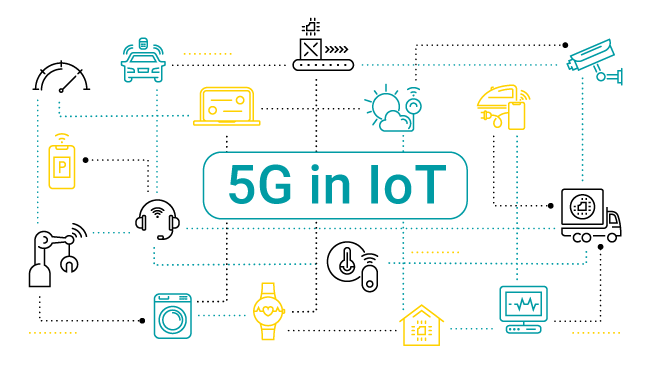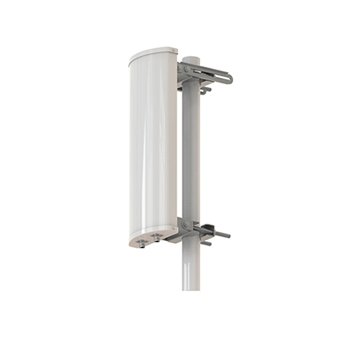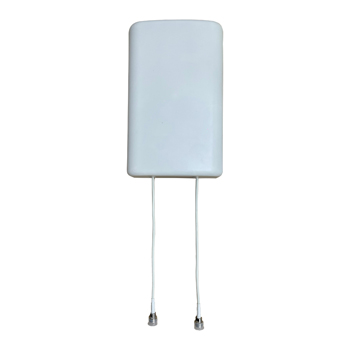
One of the top priorities of service providers is to provide enhanced services to customers. The current LTE-A (Long Term Evolution Advanced) 4G networks have become insufficient to connect a large number of devices with high data speeds, larger bandwidth, higher quality-of-service (QoS), lower latency performance, and interference to different emerging communication technologies such as Internet-of-Things (IoT). IoT is an efficient technology that can accommodate and connect numerous devices simultaneously via the Internet without human intervention. But, such seamless connectivity among devices requires a high data rate and bandwidth which is beyond the scope of current 4G LTE-A networks.
5G technology promises to solve all the speed, connectivity, and capacity limitation issues with its faster data rates and greater capacity features. These advantages and capabilities allow 5G technology to easily accommodate IoT capacity that enables the devices to constantly stay interconnected through Internet. In this article, we will discuss everything about how 5G technology enhances IoT and enables it to deliver higher-performance services without human interference. So let’s begin:
Table of Contents
Toggle5G Technology and IoT
5G technology allows high-speed Internet access from mobile devices all around the world. It is expected to greatly impact the performance of businesses and organizations with its new capabilities. But, what’s even more interesting is that it will conquer a large portion of the IoT market by offering low-power applications, cost-effective solutions, and a fast processing network structure.
The network developers are combining 5G technology and IoT to generate such innovative ideas that can reshape the structure of the world such as smart cities, smart health, video monitoring and detection, smart surveillance, smart vehicles, etc. The adoption of 5G will greatly benefit IoT providing reliable coverage and advanced services. It won’t be wrong to say the key driver behind IoT’s application and networking potential is 5G technology.
What can Tesswave do for you?
Tesswave provide 100+ antenna products and you can contact us for antenna customized solutions, get in touch with us today to get a Free quote.
Get an Instant Quote
Get a FREE quote and we will contact you within an hour
How does 5G help IoT?
Some of the IoT applications that 5G will help enable are discussed as follows:
1. More Devices and Sensors
5G allows more devices to get connected to the network as well as installation of numerous sensors all across the cities. With a fast data rate of 5G, these devices and sensors will be communicating and updating each other every second and take necessary actions accordingly. For example, the street lamps will automatically turn on by detecting pedestrian movement. 5G’ higher bandwidth allows the IoT devices to transmit huge amounts of data to perform the necessary actions.
2. Autonomous Vehicles
Autonomous vehicles, based on IoT technology, operate on self-direction. It is powered by 5G which provides it with the required network speed, capacity, and almost zero latency to achieve real-time awareness and safety measures. It enables the vehicles to talk to each other and their environment to prevent accidents and traffic jams, and maintain an efficient traffic pattern. Moreover, the smart highway infrastructure also allows autonomous vehicles to save energy by reducing the number of times vehicles need to stop or wait in line. These vehicles also notify the owner about the oil and brake condition and connect to the nearest repair facility directly.
3. Healthcare
The increased data rates of 5G will enhance the healthcare departments by allowing the machines to regularly update doctors about the patient’s condition and treatment progress. It also notifies them regarding their daily schedule and appointments as well as the medical history of each patient.
The concept of Telehealth has proved to be an enormous facility for people in rural areas. The current data rates have caused poor connectivity issues but 5G will increase the Internet speed and allow special surgeons to work in small rural clinics via robots. The patients will be able to convey their medical issues to the highly specialized doctors sitting in any part of the world via video calls. It will not only relieve patients from having to travel hundreds of miles from rural areas to urban hospitals but also save their traveling costs and prevent contagious diseases from spreading around.
4. Network Slicing
One of the most significant features of 5G technology is network slicing which allows it to create virtual networks. Virtual networks help users or businesses to prioritize their communication traffic. For example, a surgeon in a hospital would want a better connection between him and a robot so the network would be designed in such a way that the link between a surgeon and robot will be prioritized over the communication link being used by patients. This protects the emergency transmissions even if the network capacity is reaching its limit.
5. Smart shopping
5G will enable IoT-based smart shopping from anywhere in the world. With IoT, you will be able to find the exact location of the required product through your mobile phone or AR glasses as soon as you enter the store. Moreover, you can know how a particular dress will look on you through your gear using virtual reality. The smart tags and digital signage will make your shopping experience far better and smoother.
Moreover, while going to a restaurant with your friends, 5G and IoT will enable your phone to connect to the restaurant network and notify the hosts about the number of people coming, the desired menu, and any food allergies before you even step through the door.
6. Integrated Supply Chains
In the manufacturing department, IoT has enabled the factories and warehouses to keep track of their products throughout the shipping cycle. Integrated supply chains allow seamless delivery of the product to the end-user as well as notify the vendor about the successful product delivery or damage during the shipping process. This reduces cost, provides better customer service, and prevents the loss of products in transit.
Conclusion
This article discusses the significance of 5G technology in enhancing the performance of the Internet-of-Things (IoT). 5G is the major driving technology behind IoT that enables it to work in its full potential and restructure each field of human life with its autonomous features and real-time services. This article explains in detail the applications of IoT and how 5G helps to achieve the successful implementation of these applications to give users a smoother and better experience.








